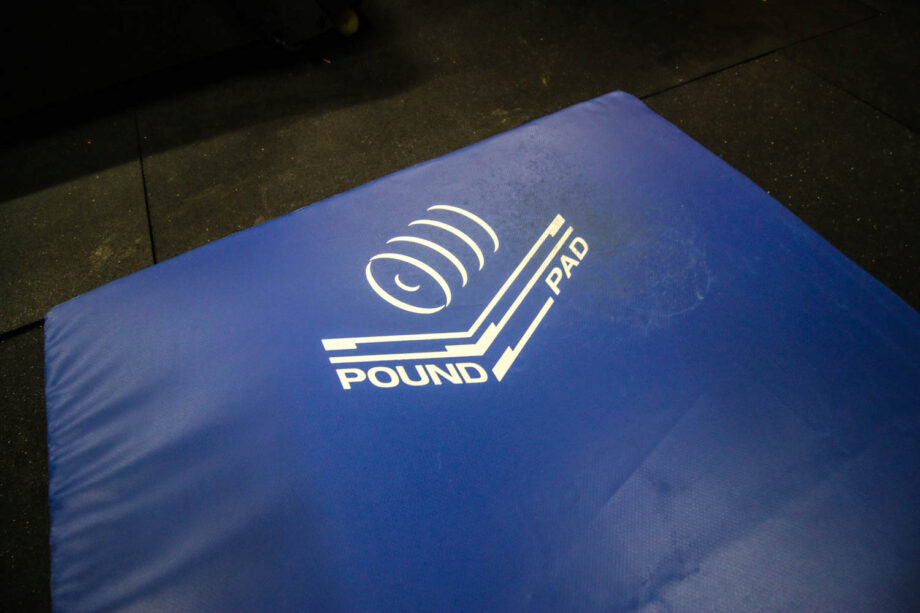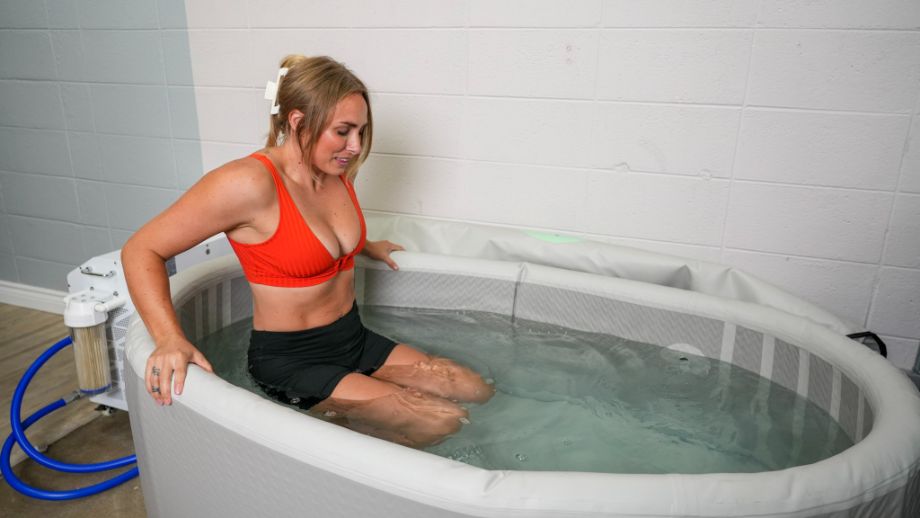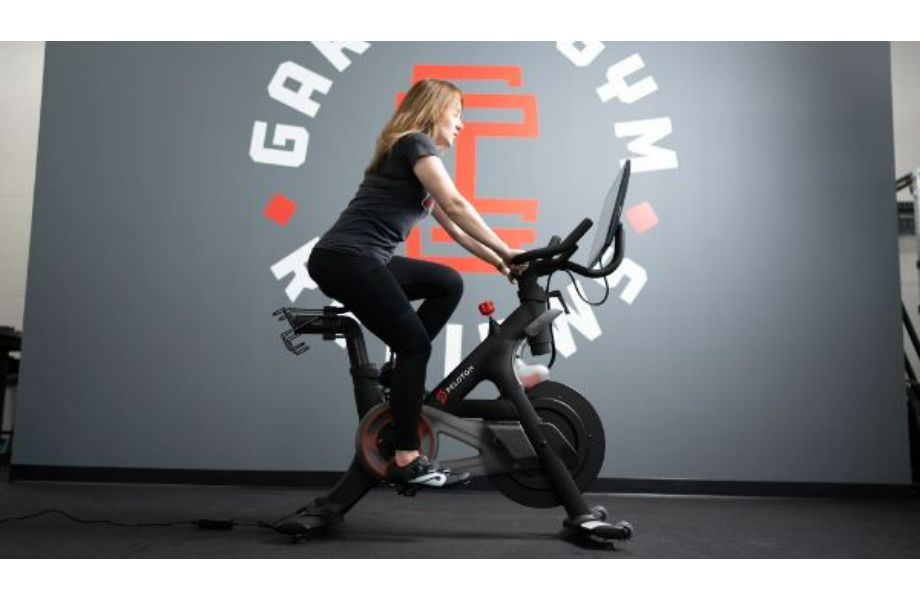Nothing builds lower body strength and muscle the way the tried-and-true back squat can, but programming the same exercises week after week often leads to boredom, monotony, and, eventually, negativity that will dampen your gains.
So, here’s a hack for your next leg day workout: the hack squat!
This underutilized squat alternative involves similar biomechanics to the standard barbell squat, but the rear loading causes the movement to emphasize the quadriceps, making it an intuitive inclusion to your leg workout rotation.
RELATED: Dumbbell Leg Workout
Amanda Capritto, CPT, CES, CNC, CF-L1, CSNC, provides everything you need to know about the hack squat, including how to do it, tips for proper form, common mistakes to avoid, and more.
How to Hack Squat
- Stand with your feet shoulder-width apart while holding a barbell behind your back using an overhand-grip.
- Push your hips back and bend your knees to begin squatting, keeping your chest tall, core tight, back straight, and eyes forward. Continue until your knees form 90-degree angles.
- Pause, then drive through your heels to return to the starting position.
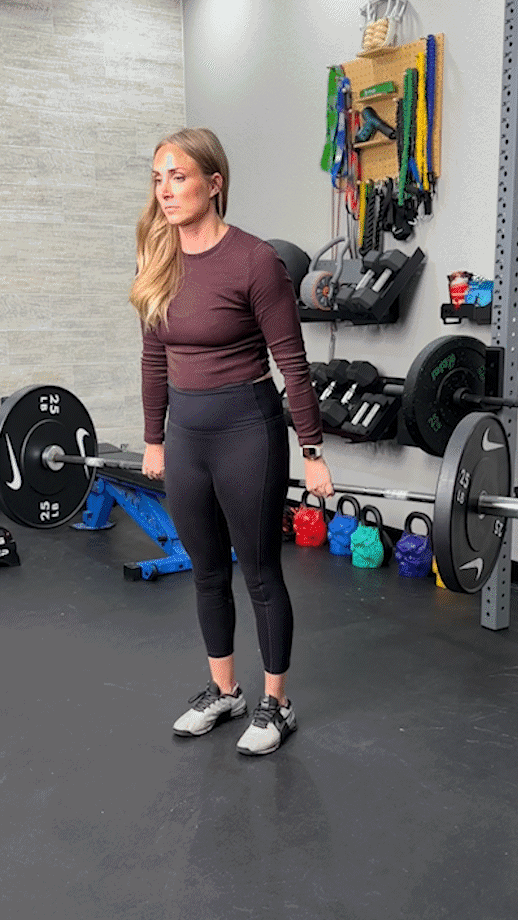
Trainer Tips for Form
The barbell hack squat is less popular than other squat variations because it looks and feels awkward. Here are a few trainer tips to help you make heads or tails of this unusual movement.
Keep Heels Flat (Elevate If Needed)
“Holding a barbell behind your back will feel awkward at first, but you need to keep your weight in the heels and keep those heels flat,” says Amanda Capritto, CPT, CES, CNC, CF-L1, CSNC. “That’s what’s going to give you a solid base and help you derive power for the eccentric phase of the lift.”
Some personal trainers might even recommend elevating your heels using a bumper plate or wearing a pair of the best weightlifting shoes, as elevating the heels improves ankle mobility, increases squat depth, and further emphasizes the quads, which are already the main target of the hack squat.

This simple hack will give you more bang for your buck on each rep.
Start With a Light Weight
It doesn’t matter if you’re known to regularly rack up every last weight plate during your back and front squats. The hack squat is an unusual movement that throws even the most seasoned lifters for a loop when first starting.
“Don’t give yourself even more to worry about while you’re still learning,” says Amanda. “Start with a light weight like an unloaded barbell or even a length of PVC pipe to practice the form before progressing.”
Starting light ensures you can keep all your focus on the movement pattern without having to hold and control a heavy barbell simultaneously. You can always progress to heavier weights as the form becomes more comfortable.
Engage Your Core
Many standing exercises require core bracing to maintain good posture and protect the lower back from undue stress. The hack squat is no exception. Engaging your core reduces your risk of injury while promoting proper biomechanics.

Keeping that core tight also helps build core strength and stability similar to actual direct ab training. According to the Journal of Human Kinetics1, high-intensity squatting produces superior muscle activation in the erector spinae compared to the tried-and-true isometric plank while providing similar engagement to the rectus abdominis and obliques.
RELATED: Isometric Exercises
So, bracing your core protects you, promotes good squat form, and helps you make headway on your goal of finally getting six-pack abs.
Common Hack Squat Mistakes
Everyone is capable of making mistakes. Here are the most common ones to look out for while learning how to do the hack squat.
Arching or Rounding the Spine
According to the Strength & Conditioning Journal2, rounding the spine while squatting subjects the lifter to “increased and potentially harmful compressive and shear forces,” which could cause or contribute to lumbar spine injuries including pains, strains, and disc herniations.
As with the traditional squat, you want to stiffen the torso and keep your back straight throughout the full range of motion to protect the lumbar spine from undue stress.
“Once you get into position, check in with your form,” suggests Amanda Capritto, CPT, CES, CNC, CF-L1. “Make sure your chest is tall, back is flat, heels are down, and eyes are forward. Take a deep breath in, then brace your core as you exhale to initiate the squat movement.”
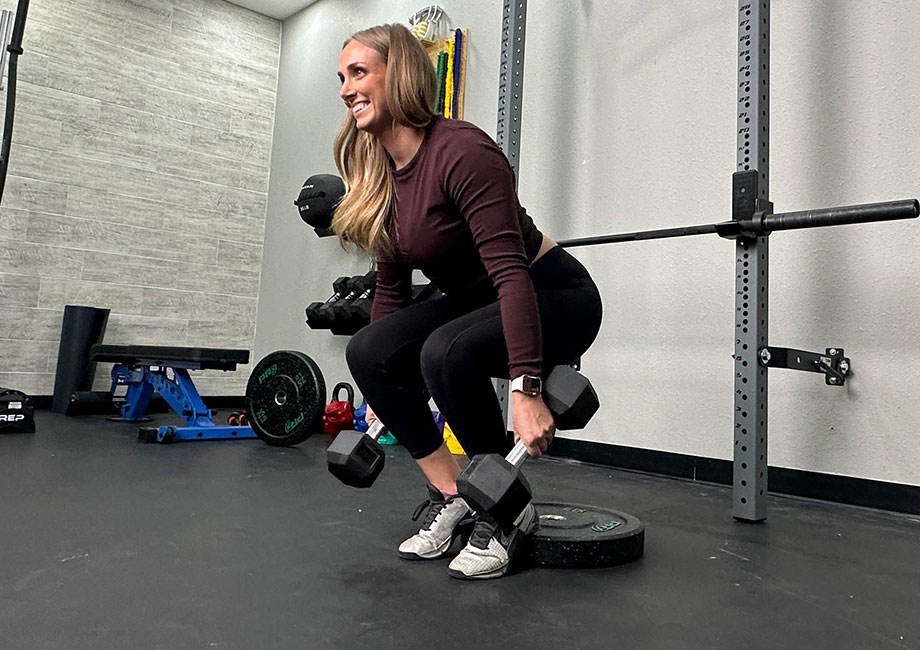
Practice maintaining a neutral spine using light weights so that, once you progress to heavy weights, you don’t wind up putting your spine in a precarious and potentially dangerous position.
Heels Lifting Up
You know the expression, “keep on your toes.” That’s exactly what you don’t want to do during squats, including the hack squat, as the weight should always be firmly on your heels.
Coming up onto your toes and subsequently letting those heels float off the floor is an indicator that your chosen weight is a tad bit too heavy, and instead of using the target muscle groups to move it, you’re compensating by using your full body weight.
You can get a full-body workout with squats and squat variations, but using body weight and momentum to move the barbell isn’t the intended way of doing that. Instead, go a little lighter to ensure your heels stay flat on the floor where they should be.
“Heels lifting during the squat could also indicate poor balance or poor ankle mobility,” says Amanda. “Wearing weightlifting shoes or elevating the heels with a bumper plate could help in a pinch. Otherwise, try a few ankle and hip mobility exercises to limber up and improve balance.”
Hack Squat Variations
Once you’ve got the standard hack squat down pat, there are a few variations to add variety to your workout routine. Here are some of our favorites.
Machine Hack Squat
Why should free-weight squats be the only way to perform hack squats?
A hack squat machine takes the hassle out of hack squats by letting you load the machine to your desired weight, lie back against the cushy back pad, place your feet on the footplate, and start repping away. There’s no fumbling with a barbell behind your back; the machine does virtually all the work to guarantee your squat form is flawless. However, there is a slight caveat.
“Hack squat machines offer a distinct set of pros and cons,” says Amanda Capritto, CPT, CES, CNC, CF-L1. “You won’t have to fuss with getting into the proper starting position since you just have to set it up, get in, and go to work. By that same token, your stabilizer muscles won’t have to work nearly as hard, and you’ll receive less muscle activation as a result.”
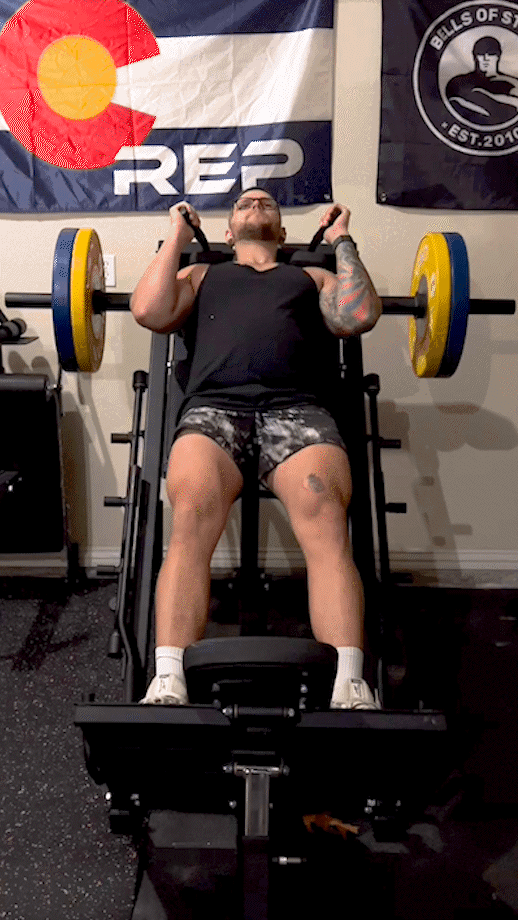
That said, letting a selectorized machine stabilize the weight for you offers some upside. Since you don’t have to expend as much energy to maintain proper form, you’ll most likely be capable of lifting heavier weights than you would on the regular hack squat.
It’s a trade-off, so we recommend using the machine hack squat rotationally.
Heels-Elevated Dumbbell Hack Squat
The heels-elevated dumbbell hack squat, at a glance, looks nearly identical to the regular squat. After all, both are essentially bodyweight squats while holding dumbbells, so what makes this movement any different?
For the hack squat, we’re holding our dumbbells at our sides using a suitcase grip, ensuring the emphasis stays on the quads rather than dispersing the activation throughout other lower body muscle groups like the glutes, hamstrings, and hip adductors.
Elevating the heels using a bumper plate is a useful addition because it encourages greater mobility and flexibility from our joints, primarily our ankles, but with some benefit to our hips and knees, too.
To perform the heels-elevated dumbbell hack squat, place two bumper plates on the floor approximately shoulder-width apart, select a pair of the best dumbbells, get into your regular hack squat position, and start squatting away.

Useful Hack Squat Equipment and Accessories
You’ll need one of the best barbells at bare minimum, but there are other useful accessories and equipment that make hack squats a cinch.
Hack Squat Machine
The barbell hack squat is tricky to navigate, especially for beginners. Using a machine makes the task significantly more manageable, letting you keep your focus on building muscle and strength rather than ensuring you get into perfect positioning to perform the lift properly.
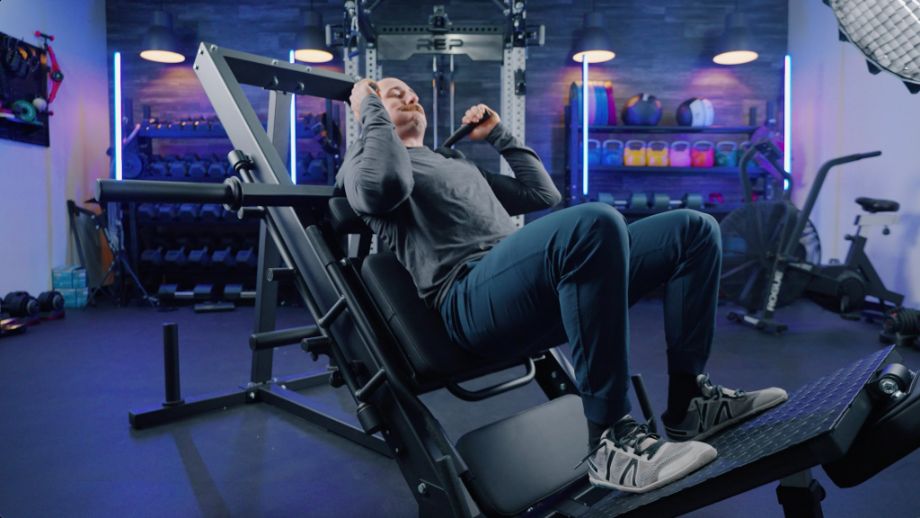
A hack squat machine is a rarer find in commercial gyms compared to more popular machines like the Smith machine, so you may not have access to a hack squat machine at your gym.
Home gym owners, therefore, might consider investing in versatile machines like the Titan Leg Press Hack Squat, which enables you to perform a variety of leg exercises from the comfort of your home gym.
Hack Squat: FAQs
What are hack squats good for?
Similar to the traditional squat, the hack squat works lower body muscles, including your quadriceps, glutes, hamstrings, calves, and lower back. In addition, this exercise provides activation to upper body muscles like the shoulders, back, forearms, and core.
Are hack squats better than squats?
According to the Journal of Strength and Conditioning Research3, the “back squat is more effective than [the hack squat] in activating the muscles of the trunk and therefore, arguably more effective in developing trunk strength and stability for dynamic athletic performance.”
“Regular squats offer tons of activation to the lower body muscles, hitting the hamstrings, glutes, and hip adductors with more intensity compared to the hack squat,” says Amanda Capritto, CPT, CES, CNC, CF-L1. “Hack squats offer superior activation to the quads. That’s the main upside it offers over the standard squat.”
So, individuals looking to maximize quadricep hypertrophy, like bodybuilders, should consider using hack squats and quadricep isolation exercises, like the leg extension, to meet their goals.
RELATED: 10 Leg Extension Alternatives
Are hack squats better than deadlifts?
Although called a “squat,” the hack squat has a lot more in common with the deadlift, appearing almost as a rear-loaded version of the classic strength-building exercise.
RELATED: Deadlift Muscles Worked
Hack squats offer some relief for lifters working through low back pain and other limiting factors. That said, most lifters are able to move significantly more weight with the deadlift, making it a much better exercise for building overall strength.
Keep in mind that a well-rounded approach to fitness is the best way to optimize gains. For that reason, you might consider using both the deadlift and the hack squat in your routine.
Is hack squat better than leg press?
Both hack squats and leg presses are compound exercises, but where the hack squat edges out the leg press is its ability to target more muscle groups than the leg press. That said, the hack squat is also a more difficult move than the leg press. Which one is better will depend on your fitness level and goals, but ideally, you can include both in your leg day.
References
1. van den Tillaar R, Saeterbakken AH. Comparison of Core Muscle Activation between a Prone Bridge and 6-RM Back Squats. J Hum Kinet. 2018;62:43-53. Published 2018 Jun 13. doi:10.1515/hukin-2017-0176
2. Myer GD, Kushner AM, Brent JL, et al. The back squat: A proposed assessment of functional deficits and technical factors that limit performance. Strength Cond J. 2014;36(6):4-27. doi:10.1519/SSC.0000000000000103
3. Clark DR, Lambert MI, Hunter AM. Trunk Muscle Activation in the Back and Hack Squat at the Same Relative Loads. J Strength Cond Res. 2019;33 Suppl 1:S60-S69. doi:10.1519/JSC.0000000000002144




